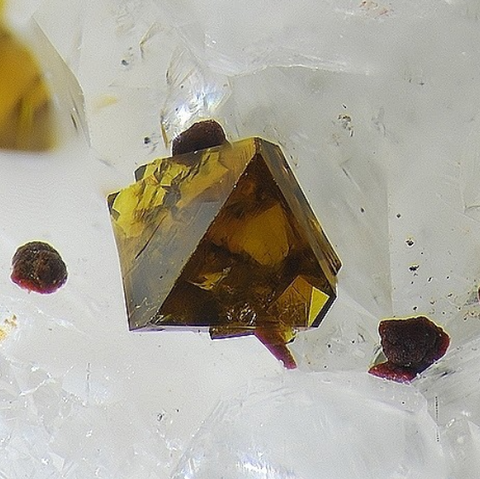BEUDANTITE
Class : Sulphates, chromates, molybdates
Subclass : Anhydrous sulphates
Crystal System : Trigonal
Chemistry : PbFe3(AsO4)(SO4)(OH)6
Rarity : Rare
Beudantite is a rare mineral, present in the oxidation zone of lead deposits. It was named in honor of the French physicist and mineralogist François-Sulpice Beudant, professor of mineralogy at the University of Paris. It commonly occurs in pseudocubic rhombohedral or pseudo-octahedral crystals, in hexagonal tablets, always small in size (less than 10 mm), in grainy masses, in hummocky encrustations or in powdery coatings. It is black, dark green or brown, rarely reddish. Beudandite has a resinous to vitreous luster, and readily accompanies various arsenates (pharmacosiderite, carminite, scorodite...). It is a very accessory ore of lead.
Main photo : Beudantite from the Clara Mine, Germany © Stephan Wolfsried
Beudantite in the World
Twinning and special crystallizations
No known twin known for this mineral species.
Fakes and treatments
No fake or treatment recorded for this mineral species.
Hardness : 3.5 to 4.5
Density : 4,48
Fracture : Conchoidal
Trace : Gray-yellow to gray-green
TP : Translucent to transparent
RI : 1.943 to 1.957
Birefringence : 0,014
Optical character : Uniaxial -
Pleochroism : Visible
Fluorescence : None
Solubility : Hydrochloric acid
Magnetism : None
Radioactivity : None





